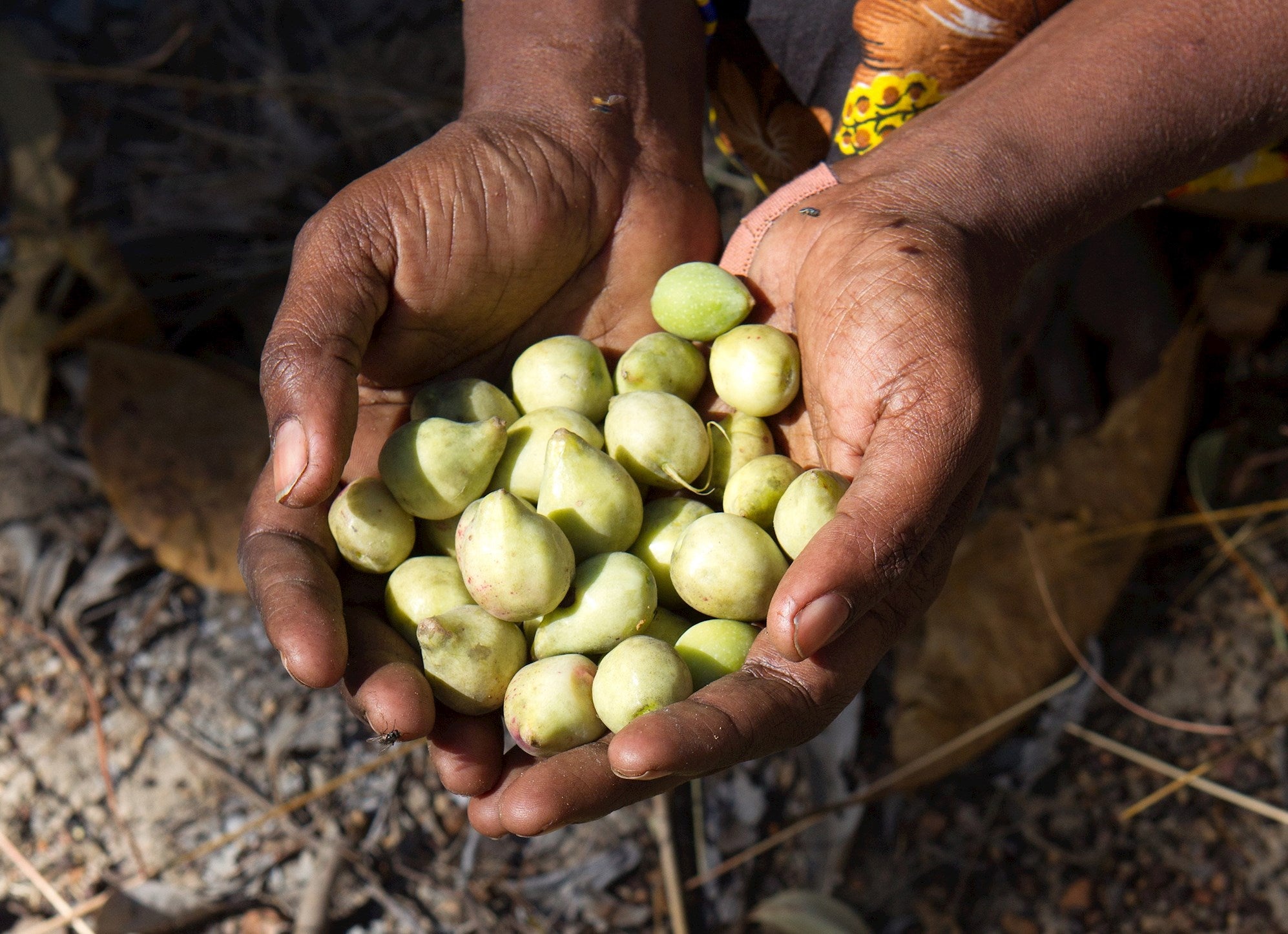Bush Medicine
We are very excited here at Yarn to now have a whole range of skincare and hair care brands that incorporate beautiful native botanicals and bush medicine recipes. As such we thought this would be the perfect time to take a closer look at Indigenous Bush Medicine and the incredible healing plants that Australia offers. These are the unique plants and remedies that First Nations people have been utilizing for thousands of years.
 Bush Medicine in Jay Creek, NT by Mervyn Rubuntja. Image sourced from The University of Melbourne, 2021.
Bush Medicine in Jay Creek, NT by Mervyn Rubuntja. Image sourced from The University of Melbourne, 2021.
Traditionally most Indigenous medical treatments were derived from food. A large part of maintaining health for First Nations people was simply eating right. When they did fall sick a large variety of plants were and still are used. These plants are applied to the skin or boiled and inhaled. One example which is still commonly used today is Eucalyptus. Traditionally, the leaves would be boiled to create an oil to treat bruises and cuts and infused and inhaled to help alleviate asthma and fever (Kamenev, 2011). The knowledge of these remedies is passed down through the generations via word of mouth, each new generation learning from their elders. This important knowledge is starting to be lost due to the many western impacts such as loss of language, fractured communities and restricted access to traditional land (Critchley, 2018). As such it is more important than ever that this knowledge is preserved and shared through brands such Bush Medijina who bring together the collective knowledge of their community and share it with everyone through their products.
 Bush medicine: a collaborative work by Tossie Baadjo, Jane Gimme, Gracie Mosquito, Helen Nagomara, Ann Frances Nowee and Imelda Yukenbarri. Image sourced from The University of Melbourne, 2021.
Bush medicine: a collaborative work by Tossie Baadjo, Jane Gimme, Gracie Mosquito, Helen Nagomara, Ann Frances Nowee and Imelda Yukenbarri. Image sourced from The University of Melbourne, 2021.
Cultures often have very different views and beliefs surrounding health and sickness. Western views are predominantly based on what can be proven through science while Indigenous beliefs are more holistic, they are based on a connection between the spiritual and physical. To keep healthy it is essential that a balance between spiritual and physical is maintained (Australian Indigenous Health Info Net, 2020). Traditional Indigenous health beliefs are also interconnected with many aspects of life including country and kinship obligations. There is a strong belief that social and spiritual dysfunction can cause illness, as such a person's social obligations often come before their own health (Maher, 1999). Over all, there is deep belief in the interconnectedness of all parts of life and the need to work together to stay healthy.
While the beliefs of western and Indigenous medicine are somewhat different there are many bush medicines that are now widely used and have been scientifically proven to be effective. Western medicine has been using Australian bush medicine since colonial times. One such example of a bush remedy that has been incorporated into modern medicine is Kangaroo Apple. Traditionally Indigenous women would create a drink out of the boiled unripe fruit, which would act as a contraceptive. Today, Kangaroo Apple is a key ingredient in many contraceptive pills (Kamenev, 2011).
 Kangaroo Apple. Image sourced from Rare and Exotic Seeds, 2021.
Kangaroo Apple. Image sourced from Rare and Exotic Seeds, 2021.
Here’s an overview of some of the bush medicines and native plants that are still frequently used by both Indigenous communities and modern medicine. The first is very well known, Tea Tree Oil. Traditionally, the Bundjalung Aboriginal people from the coast of New South Wales would crush Tea Tree leaves and apply the paste to wounds. They would also brew a kind of tea for throat ailments. Today, Tea Tree Oil is a very common antiseptic. Another incredible bush medicine is the Kakadu Plum, a native fruit which grows in the woodlands of the Northern Territory and Western Australia. The fruit is the world's richest source of vitamin C with 50 times the amount contained in oranges and is as such considered a superfood. Last of all is Snake Vine. The vine was used by many communities in Central Australia and forms an important part of their Dreamtime stories. Crushed sections of the vine were used to treat headaches, arthritis and inflammatory-related ailments, while sap and leaves were used to treat sores and wounds (Kamenev, 2011).  Kakadu Plum. Image sourced from NAAKPA, 2021.
Kakadu Plum. Image sourced from NAAKPA, 2021.
This was just a brief overview of some bush medicines and how they were traditionally used. If you would like to purchase some products that incorporate the incredible properties of these plants check out our Yarn partner brands Dilkara and Bush Medijina.






